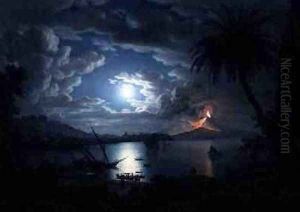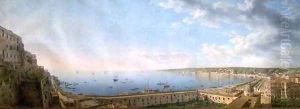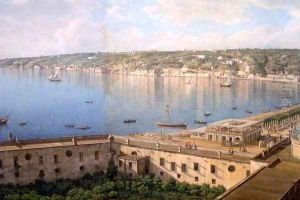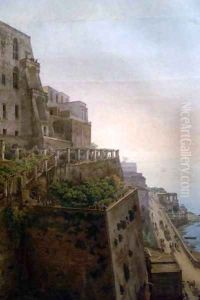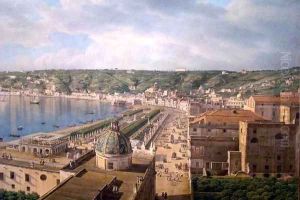Giovanni Battista Lusiere Paintings
Giovanni Battista Lusieri was an Italian painter, known primarily for his landscape and topographical works. Born in 1755 in Rome, he was part of the late 18th-century movement towards realism in landscape painting and is often associated with the vedutismo genre, which focused on accurate depictions of scenic views and cityscapes.
Trained in Rome, Lusieri developed a meticulous technique, placing an emphasis on detailed architectural and natural elements within his compositions. He worked with watercolors and was recognized for his skill in capturing the effects of light and atmosphere, which brought his landscapes to life.
Despite his Italian origins, Lusieri is perhaps best known for his work outside of Italy. In 1799, he was employed by Thomas Bruce, the 7th Earl of Elgin, who is infamously known for removing the Parthenon Marbles from Greece. Lusieri was initially hired to create illustrations of the antiquities and landscapes of the Eastern Mediterranean, but he eventually became involved in the controversial removal process of the sculptures. His connection with Lord Elgin put him in a somewhat unfavorable light in some historical accounts, especially concerning the 'Elgin Marbles' debate.
Lusieri remained in Athens for many years, continuing his work as an artist and overseeing Lord Elgin's interests in the region. His painstaking attention to detail often meant that he took years to complete his works. Unfortunately, this, combined with his long-term residence abroad, has resulted in a relatively small number of works that can be definitively attributed to him today.
During his lifetime, Lusieri was highly regarded for his artistic talents, though he did not achieve the same enduring fame as some of his contemporaries. Nevertheless, his works provide an important historical record of many sites in Greece and the surrounding areas before they underwent significant changes in the 19th and 20th centuries.
Giovanni Battista Lusieri died in Athens in 1821. The legacy of his work has been somewhat overshadowed by the controversy of his involvement with the Elgin Marbles, but his detailed and atmospheric landscapes continue to be appreciated for their technical brilliance and historical value.
